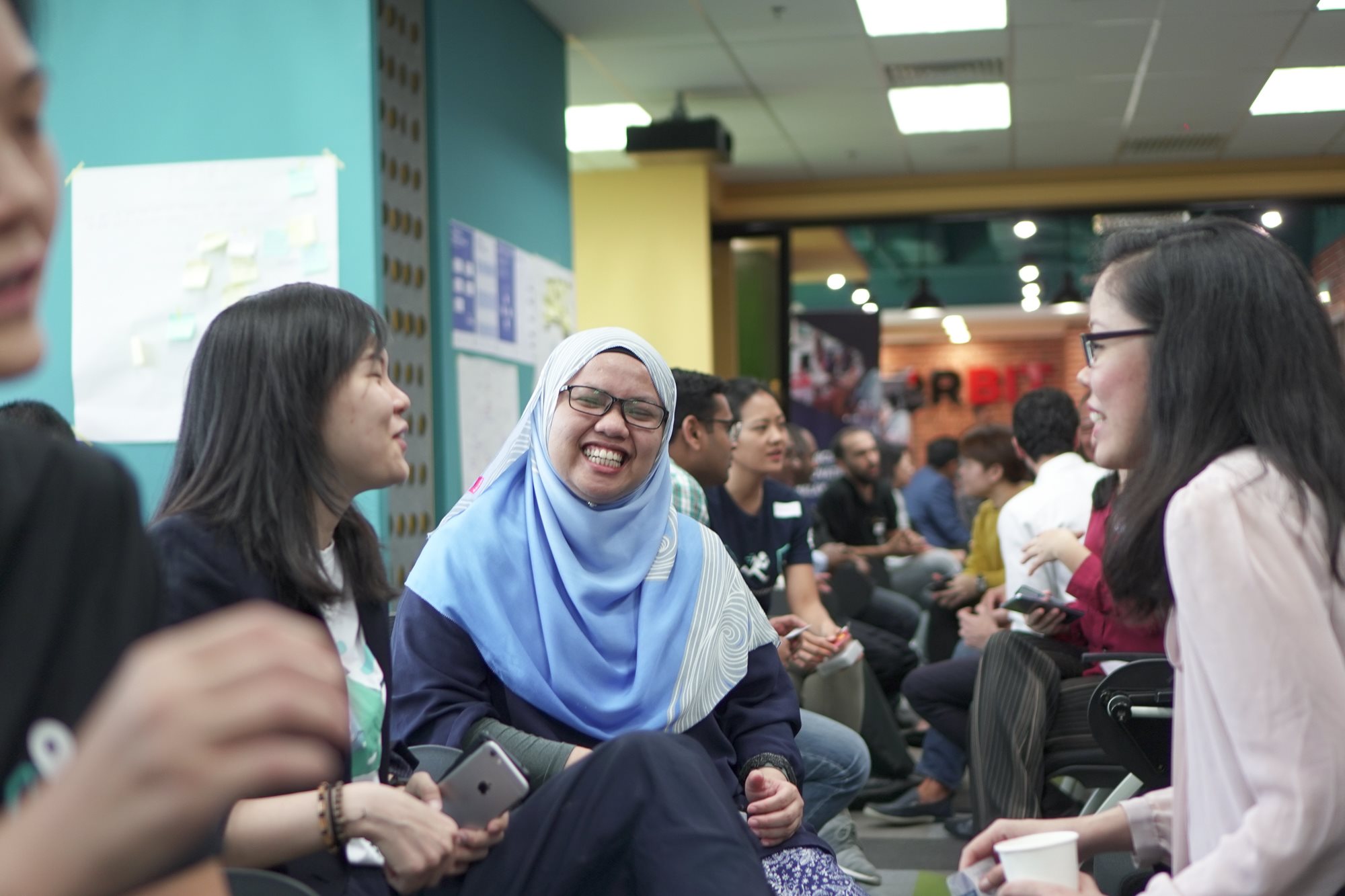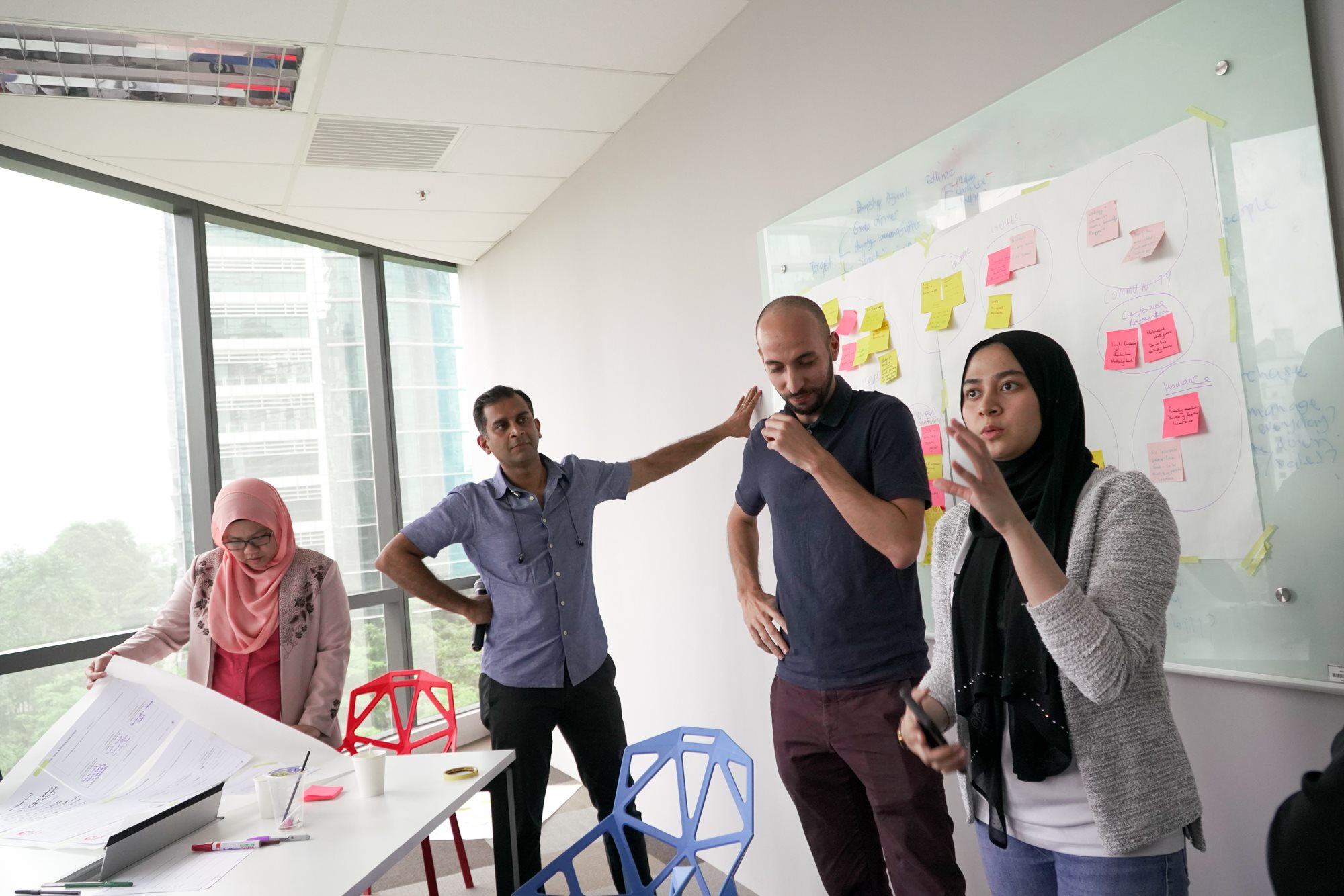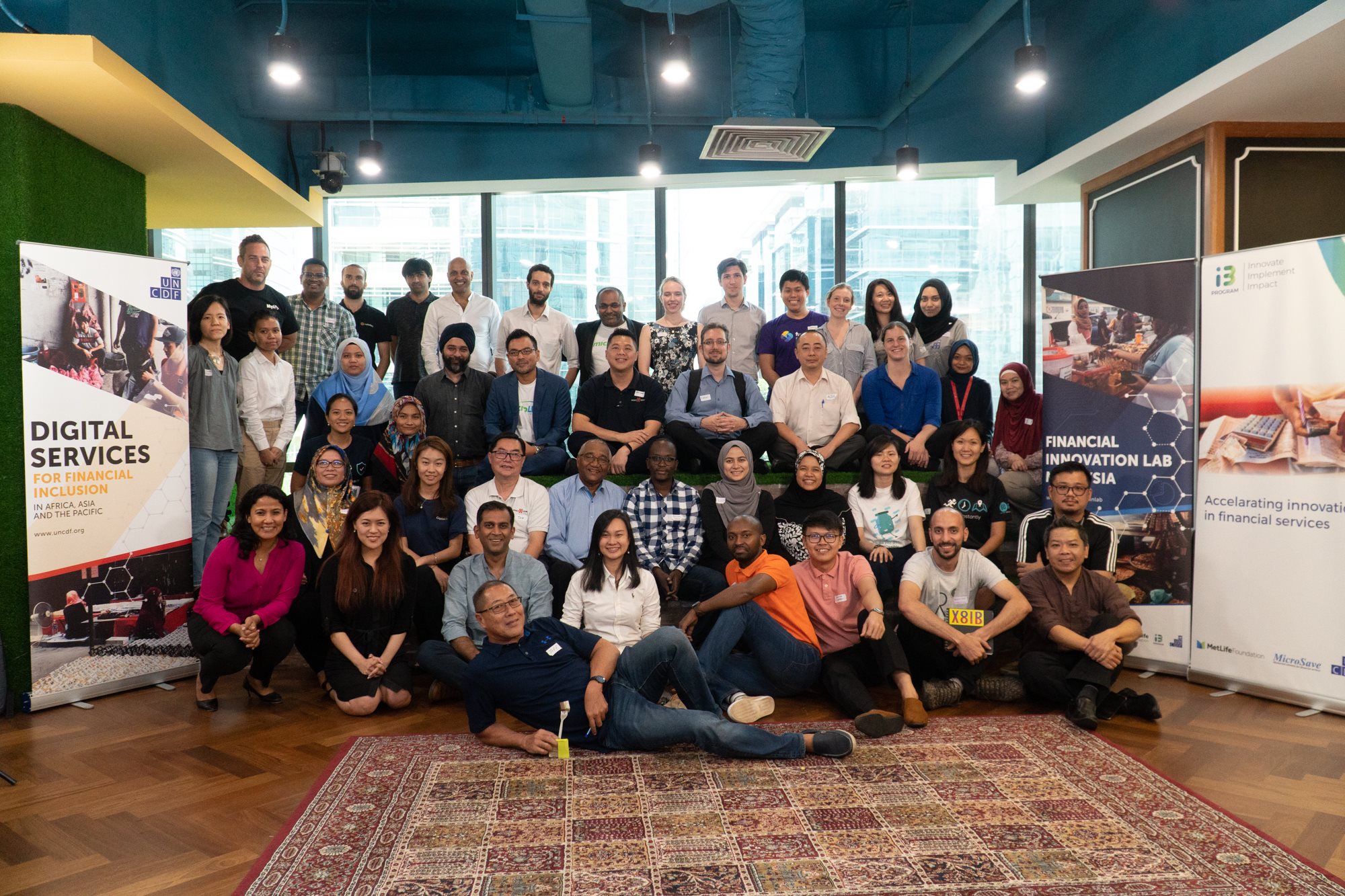Making Malaysian Fintech Fairer: Lessons From Bootcamp 1
Contact
For further information please contact:
Rose Payne
Communications Consultant, UNCDF
rose.payne@uncdf.org
Tags

How can we put people at the centre of digital financial services? UNCDF Malaysia ran a Bootcamp last week with eighteen teams from technology start-ups which suggested the answer might be focusing on users’ experience of digital financial services.
In December UNCDF Malaysia, funded by the MetLife Foundation through the i3 Program, launched a Challenge asking start-ups to design or adapt products to serve the B40 population (i.e. the lowest earning 40% of the Malaysian population). It’s vital that more products and services which suit the needs this population are created to help them improve their financial health. After receiving more than a hundred applications from start-ups hoping to take part in the Challenge 18 teams were selected to take part in the first Bootcamp on March 11th to the 15th at The Orbit Fintech Hub in Kuala Lumpur. They were joined by UNCDF team members from around the world, and fintech experts from programme partners Bank Negara Malaysia and the Malaysia Digital Economy Corporation, who facilitated the week of workshops.
Across five days participating teams learnt about human centred design; a design methodology that aims to make systems usable and useful by focusing on the users, their needs and requirements, and by applying human factors, usability knowledge, and techniques1. For many of the start-ups this was their first experience of human centred design, and they expressed surprise at how quickly their assumptions were overturned. An initial exercise asked the teams to arrange themselves by how much they were already engaging with the B40 population. Through a series of questions their initial placement was challenged, and many moved up and down the line throughout the exercise.
Design thinking and digital financial services
The week followed the design thinking process, with participants spending the first day building a foundation by creating an overview of their current situation and defining exactly what they wanted to achieve in this Bootcamp. When asked why they wanted to reach the low-to-middle income population most start-ups gave similar answers, as they all said this population is both very large and underserved. From a financial inclusion perspective, this is a group that could greatly benefit from increased access to digital financial products. And from an economic perspective, the B40 population is an untapped market that offers a great deal of potential if properly utilized. This dual reasoning of social impact and the potential for profit is at the core of many start-ups’ business propositions.
The start-ups then learnt and applied a series of tools which helped them to define the problem or opportunity they were addressing. These included the problem tree and 5 whys, which are designed to help define the causes and effects of different problems.

Understanding the needs of low-to-middle income people
Reaching low-to-middle income people was clearly defined as an opportunity by the start-ups. Malaysia has been described as a good testing ground for fintech start-ups; it is at the centre of ASEAN, the low- and middle-income population offers a large market of potential consumers, the country has high cultural diversity and reasonably well-developed digital infrastructure. Due to these factors, as well as the high use of mobile phones and internet, digital financial services have large potential here. Additionally, the B40 population has historically been inadequately served by traditional brick-and-mortar financial services and this poses a good opportunity for engagement with DFS.
However, the opportunity presented by reaching low-to-middle income start-ups comes with major challenges. These challenges include market outreach, lack of financial education and awareness, and lack of trust in digital financial services. The bottom 40% of the population, though open to digital solutions, are hesitant to engage with DFS; many low- and middle-income people do not have the financial literacy needed to use traditional financial services. They also do not trust many new start-ups who have yet to make themselves well-known in the country.
To overcome these challenges the start-ups need to truly understand the needs of low-to-middle people and how they interact with financial services. To do this the teams went out into the field to conduct primary research with micro-entrepreneurs. The start-ups reported some eye-opening encounters. One participant has worked in insurance for low-to-middle income people for decades but says that this exercise challenged his assumptions about their financial needs and wants. He spoke to the owner of a shop he has been visiting for decades; “despite the fact I’ve known Mr. Yong for 20 years I never had the opportunity to understand his business, problems, dreams and aspirations. Talking to Mr. Yong gave me a new level of respect for small business owners.”
Confronting data and field research
Armed with their research, on day three the start-ups began to make sense of the data they gathered during their research. At this stage they began to really focus in on their target customers, mapping the ways that their target customers interact with products or services and creating user personas. Personas are fictional “characters” created to represent a type of user or stakeholder for whom a solution has to be developed. The persona is not a generic demographic profile but a summary of needs, behaviours, motivations, and challenges that helps to provide the foundation to create a solution.
Now that the start-up teams were absolutely clear about who their target customer was they could move onto the fun part- generating as many ideas as possible for solutions that would fulfil the target customer’s needs or overcome their challenges. The room was full of energy as people got the chance to exercise their creativity. The start-ups then looked at how you get from idea to functional product through a process of prioritisation, prototyping, and iteration.

Beyond Bootcamp 1
This cohort expressed interest in partnerships with financial institutions, established companies, NGOs, and various government bodies in order to enhance their credibility and build brand recognition. This is necessary due to the lack of trust in start-ups expressed by low-to-middle people. Additionally, start-ups require mentorship and assistance in navigating regulation and licensing protocols, building their technology, and scaling their business.
This is why, on the last day, the start-ups were introduced to mentors from the aforementioned types of organizations who will be working with them in the coming months. They engaged in “speed-mentoring”, with each participant getting a few minutes to talk to each mentor. The mentors then gave feedback to the start-ups on their proposed solutions. Many participants named this as one of the most valuable parts of the Bootcamp.
With two further Bootcamps on the horizon, and a final Demo Day at MyFintech Week’19, the Bootcamp participants work has only just begun. Before the next Bootcamp on April 22nd they will continue to engage with their mentors and UNCDF as they create and refine their solutions. But for some participants the impact can already be seen as they return back to their companies. One participant told us that after using the tools with their colleagues who hadn’t attended the Bootcamp they realized that rather than adding a service, which they originally proposed, they needed to change their outreach strategy as they weren’t currently reaching the low-to-middle income customers they were targeting. We’re excited to see how other Bootcamp participants will use the tools and knowledge they gained to reach those people in Malaysia who currently don’t have the digital financial services they need.
References:
1 Definition taken from ISO 9241-210:2010